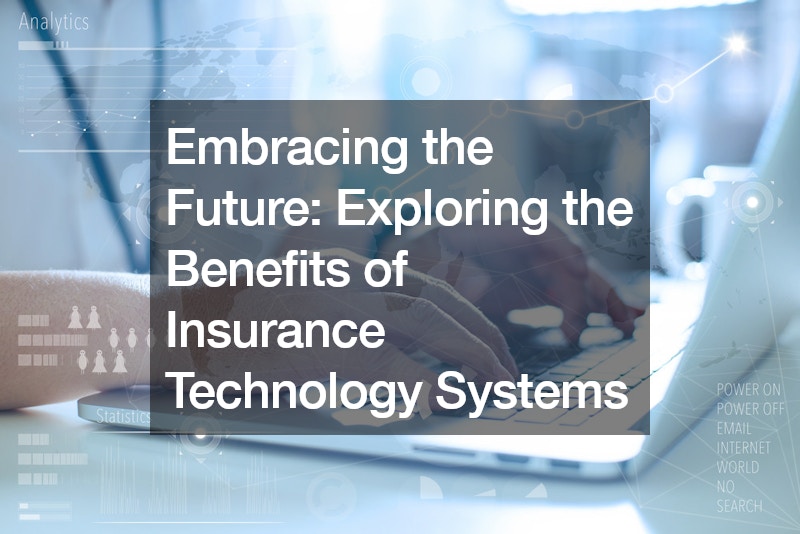In today’s rapidly evolving digital landscape, industries leverage technological advancements to streamline operations and enhance customer experiences. Traditionally seen as conservative, the insurance sector is also undergoing a profound transformation by adopting Insurance Technology Systems (ITS). These systems are revolutionizing how insurance companies manage policies, process claims, and interact with customers, ultimately paving the way for a more efficient and customer-centric industry.
Enhanced Efficiency and Streamlined Operations
One of the primary benefits of insurance technology systems is their ability to enhance operational efficiency within insurance companies significantly. Traditionally, insurance processes were often cumbersome and time-consuming, requiring extensive paperwork and manual data entry.
However, with the advent of ITS, tasks that once took days can now be completed in hours or even minutes. Automated underwriting processes, for instance, allow insurers to assess risks and generate quotes swiftly, enabling quicker decision-making and policy issuance.
Moreover, these systems facilitate seamless integration across various departments within an insurance company. ITS ensures that data flows efficiently between different stages of the insurance lifecycle, from underwriting to claims processing and customer service. This integration reduces the likelihood of errors and improves overall organizational agility, enabling insurers to respond swiftly to market changes and customer demands.
Customer-Centric Innovations
Insurance technology systems are reshaping how insurers interact with their customers, emphasizing enhancing the overall customer experience. Customer expectations are evolving, driven by their experiences in other sectors where digital convenience and personalized service have become standard. ITS enables insurers to meet these expectations by offering intuitive online portals and mobile apps, allowing customers to manage policies, submit claims, and receive real-time updates.
For instance, platforms like Bought By Many exemplify how ITS can efficiently cater to niche customer needs. By pooling individuals with specific requirements, such as travel insurance for those with pre-existing medical conditions, ITS allows insurers to offer tailored solutions previously challenging to provide. This approach expands the market reach and ensures customers receive policies that align closely with their unique circumstances.
Risk Management and Predictive Analytics
Another pivotal benefit of insurance technology systems is their capacity to enhance risk management through advanced analytics and predictive modeling. Insurers can now leverage vast amounts of data, from historical claims data to real-time market trends, to assess risks more accurately and price policies accordingly. Predictive analytics algorithms can identify patterns and correlations within data, allowing insurers to anticipate and mitigate risks proactively.
Moreover, ITS enables insurers to offer usage-based insurance models, such as those pioneered by companies like Metromile. By charging premiums based on actual vehicle usage, insurers incentivize safer driving habits and ensure fairer pricing for customers who drive less frequently. This data-driven approach not only benefits customers but also enhances profitability and sustainability for insurers by aligning premiums more closely with risk exposure.
Innovative Claims Processing
Claims processing is a critical aspect of insurance operations where efficiency and accuracy are paramount. Insurance technology systems streamline this process significantly, reducing the time and resources required to settle claims. Automated claims adjudication systems can analyze claims data against policy terms and conditions, accelerating decision-making and reducing the potential for fraud.
For example, innovative insure-tech companies like Slice have introduced on-demand insurance models tailored to the gig economy. By automating the insurance activation and deactivation process for rideshare drivers, Slice ensures that coverage aligns precisely with the period during which drivers are on duty. This simplifies insurance administration and enhances the affordability and accessibility of insurance for gig workers.
Conclusion
The Insurance technology system benefits are clear and far-reaching, transforming an industry known for its traditional approach into a dynamic and customer-centric ecosystem. From enhanced operational efficiency and personalized customer experiences to advanced risk management and innovative claims processing, ITS is reshaping how insurance companies operate and interact with their stakeholders.
As we embrace the future of insurance, driven by technological advancements, we focus on leveraging these systems to meet and exceed customer expectations. By embracing innovation and agility, insurers can navigate the complexities of the modern marketplace while delivering value and security to their customers.
insurance technology systems are not just about adopting new tools but about embracing a mindset that places customer needs at the forefront of industry evolution. As we continue to witness the convergence of insurance and technology, the potential for further innovations and improvements remains limitless, promising a future where insurance is reliable and seamlessly integrated into the daily lives of individuals and businesses alike.
.


